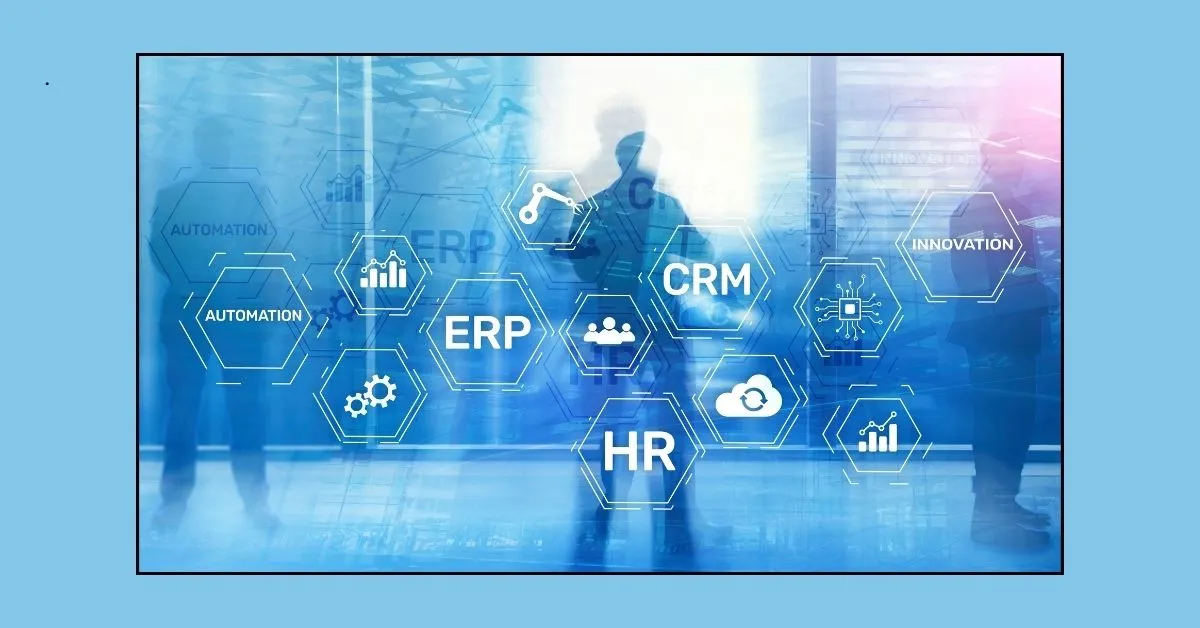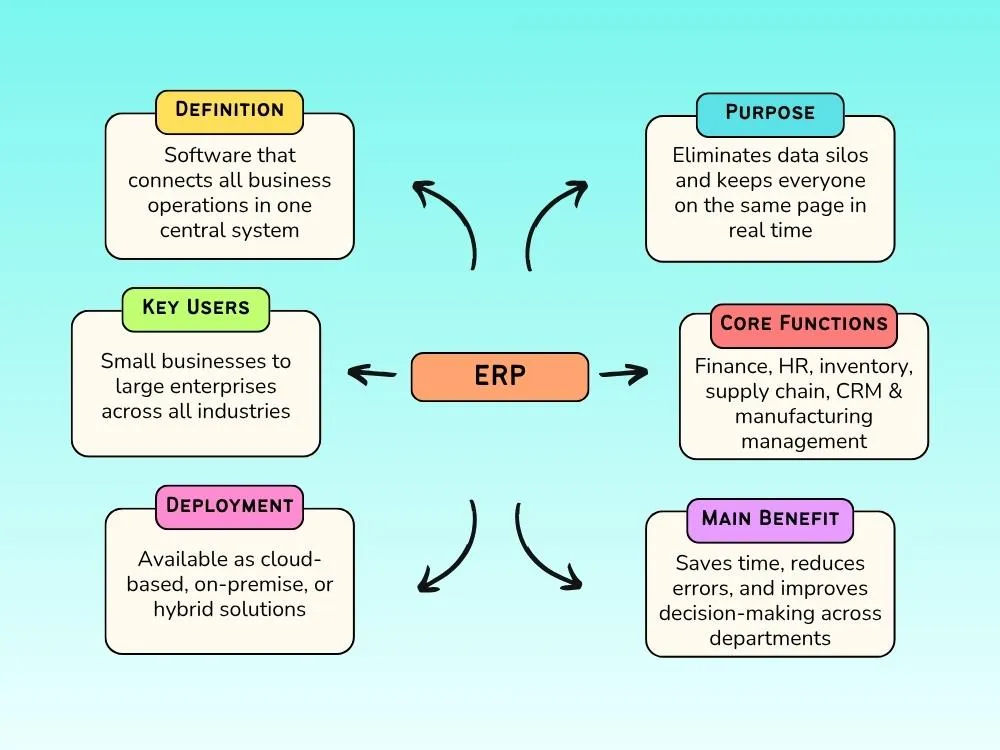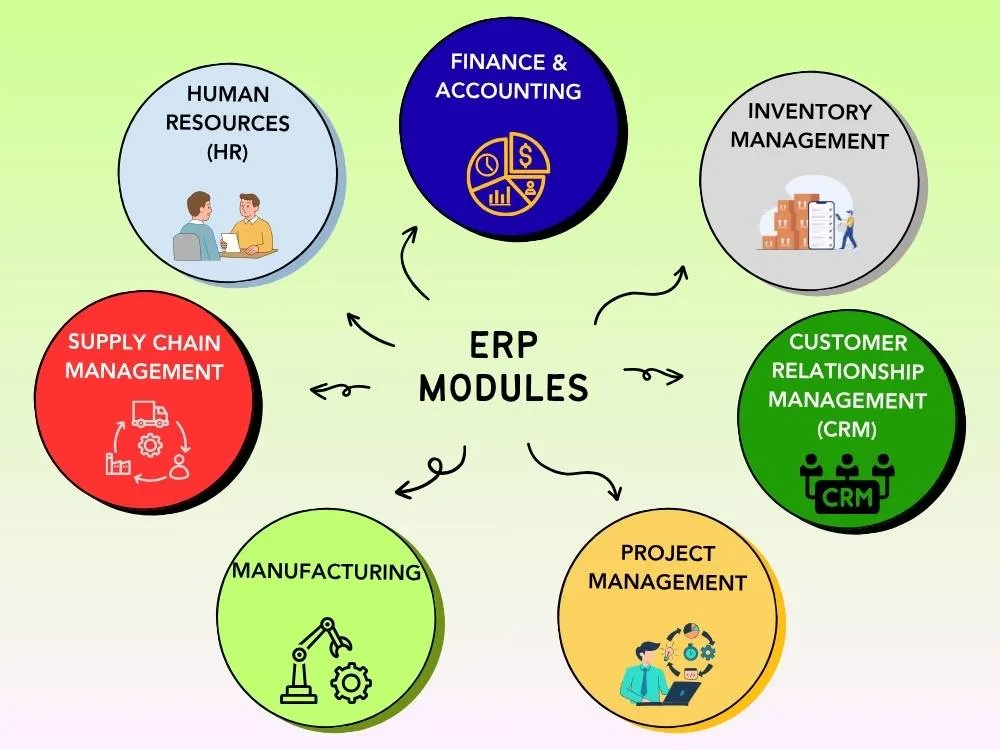
What Is Enterprise Resource Planning (ERP)? Definition, Modules, Systems and Advantages
Ever think about how big firms manage to keep everything smooth without a constant mess? A system known as Enterprise Resource Planning, or ERP, is the answer. Imagine it as the central point that links all sections of a company together. Firms can operate from one location rather than juggling several isolated tools.
This not only simplifies the process but also keeps everyone involved. If you are curious to know how companies stay organized and want to improve your business, this guide will take you to the bottom of what ERP is all about and why it's significant for businesses.
Key Takeaways
- Understand ERP, its core modules, and how it actually works in simple terms.
- Know the key benefits of using ERP in your company.
- Discover the best ERP systems with their key features, pros, and cons.
- Learn how to choose an ERP system and the future predictions.
So, What Exactly Is ERP?
ERP stands for Enterprise Resource Planning. It's a software that helps businesses manage all their core operations from one place. Think of it as the central nervous system of your company, which connects everything like finance, HR, inventory, supply chain, manufacturing, you name it.

This saves time and also eliminates the mistakes resulting from using old data. At first, ERP systems were only used by big companies as they were costly. But now, all small and mid-sized companies utilize them to get the benefit of working smarter and faster. It’s like a digital command center for the entire operation.
A Quick Example
Let's say you run a medium-sized furniture business and your sales team has secured a big order. The normal, pre-ERP process for processing that large order would involve an email to the warehouse to check if there's sufficient stock, the warehouse notifies the finance department, the finance department would process the billing, and notify HR if the order requires overtime pay based on production. A lot of emails, steps, and chances for delays and mistakes.
But with an ERP? One system does it all. The sales order automatically updates inventory, triggers a production plan, and notifies finance and HR. Everyone’s in sync without lifting a finger.
The Core ERP Modules
ERP isn’t a one-size-fits-all deal. It’s a combination of modules that deal with different areas within your business. Let’s break down the most common ones.

1. Finance and Accounting
This is a vital module that deals with budgets, invoices, payroll, and reporting. You’ll get real-time insights into cash flow, profit margins, expenses, and other financial elements without having to ask your accountant for updates.
Key features include:
- Automated billing and payments
- Real-time financial reporting
- Tax compliance tools
- Expense tracking
Ever tried reconciling 50 transactions manually? ERP does that for you. (You can thank it later)
2. Human Resources (HR)
Managing people is somehow tough. ERP helps keep things simple and assists you in tracking recruitment, employee data, attendance, payroll, and even performance reviews.
Highlights:
- Streamlined onboarding
- Centralized employee database
- Leave and attendance management
- Payroll automation
It’s basically an HR assistant that never takes coffee breaks.
3. Inventory Management
Nothing’s worse than running out of stock right before a major order, or worse, overstocking and watching products collect dust. ERP’s inventory module gives you real-time visibility into stock levels, orders, and deliveries.
Why it rocks:
- Automated reordering
- Real-time inventory tracking
- Warehouse management
- Demand forecasting
Ever thought about why Amazon always seems to have what you want in stock? Yup, they have ERP at work. Also, check this article on inventory management for a comprehensive understanding.
4. Supply Chain Management
If your business relies on logistics or manufacturing, this one’s non-negotiable. The supply chain module keeps your vendors, deliveries, production, and customers all perfect.
Top features:
- Vendor management
- Shipment tracking
- Production scheduling
- Cost optimization
It’s like having a GPS for your entire supply chain, minus the recalculating route voice.
5. Customer Relationship Management (CRM)
You can’t forget your customers. ERP systems often include CRM capabilities that allow you to manage leads, sales, and customer interactions in one place.
CRM perks include:
- Centralized customer data
- Automated sales tracking
- Marketing campaign management
- Customer support integration
Ever had to explain your issue five times to five different reps? ERP makes sure that never happens again.
6. Manufacturing
ERP's manufacturing module is a lifesaver for companies that make stuff. It helps handle production schedules, resource management, quality control, and equipment maintenance to keep your operation running smoothly.
What it handles:
- Production planning
- Quality assurance/control
- Equipment maintenance
- Resource allocation
Basically, it helps you make more products with fewer headaches.
7. Project Management
Got multiple projects running simultaneously? ERP’s project management tools help you easily track deadlines, budgets, team performance, etc.
Why it matters:
- Real-time project tracking
- Budget forecasting
- Task scheduling
- Collaboration tools
Because who doesn’t love finishing projects on time for once?
How ERP Actually Works (Without the Tech Jargon)
ERP runs on a centralized database. Every department plugs into it and shares data in real time. So, when HR updates payroll, finance sees it instantly. When inventory logs a new shipment, sales know what’s in stock.
Everything stays connected and transparent, where you get up-to-date information. No duplicate entries or no data silos. ERP can be hosted in the following ways:
- On-premise ERP: Installed directly on your company’s servers. More control, but more maintenance.
- Cloud ERP: Hosted online, managed by the vendor. Less hassle, easier updates.
- Hybrid ERP: A mix of both, giving you flexibility.
IMO, cloud ERP is where most businesses are headed. It’s more scalable and way less painful to maintain. See the differences between them clearly in the following table:
| Feature | On-Premise ERP | Cloud ERP | Hybrid ERP |
|---|---|---|---|
| Where it lives | Your own servers | Vendor's servers online | Mix of both locations |
| Setup cost | High upfront investment | Low, subscription-based | Medium, depends on setup |
| Maintenance | Your IT team handles it | Vendor takes care of it | Shared responsibility |
| Updates | Manual, takes time | Automatic and regular | Varies by component |
| Access | Mainly from office network | Anywhere with internet | Flexible, depends on setup |
| Scalability | Harder to expand quickly | Easy to scale up or down | Moderate flexibility |
Why Businesses Love ERP (Key Benefits)
Let’s take a look at the bright side first. What's the point of investing in an ERP system anyway? The advantages of ERP are real and measurable as follows:
- Unmatched Efficiency: Say goodbye to duplicating data, having updates missed, and long email threads. Together with workflow automation, ERP offers the same information to all staff at the same time.
- Insights in Real Time: With ERP, a 360° view of the business is provided. You can easily track sales and monitor performance. Plus, it helps spot issues before they become so problematic.
- Collaboration at Its Best: Communication will be smooth because all people use the same system. Departments stop fighting over data and actually start working together.
- Improved Decision-Making: You can make the right and quick decisions when you use an ERP system. You no longer have to guess or depend on old reports.
- Flexibility: Your ERP grows with you. Whether you’re managing ten employees or ten thousand. The systems can scale without breaking a sweat.
- Cost Savings: The initial cost of ERP is high. However, it's a good investment to minimize the costs like a professional. It does this by streamlining processes and increasing accuracy.
- Compliance Simplified: ERP systems will keep you compliant with tax laws to labor laws. Less paperwork, lower fines, and more time for actual work.
But Let’s Be Real. ERP Isn’t Perfect
Every superhero has a weakness, right? ERP isn't exclusive to this.
- Cost: Implementation cost is high, especially for smaller businesses.
- Complexity: Setup takes time and planning. You can’t just plug and play.
- Training: Employees need time to learn and utilize the system.
However, the long-term benefits are pretty much good compared to these challenges. When employees get used to the system, it will be so easy for them to do their tasks, and they'll never want to go back to traditional methods of working.
Best ERP Systems
| Software | Best For | Key Features | Pros | Cons |
|---|---|---|---|---|
| Zoho One | Small businesses |
|
|
|
| Odoo | Small to mid-sized businesses |
|
|
|
| Acumatica | Mid-sized businesses |
|
|
|
| Microsoft Dynamics 365 Business Central | Mid-sized to large businesses |
|
|
|
| NetSuite | Growing mid-sized businesses |
|
|
|
| SAP S/4HANA | Large enterprises |
|
|
|
| Oracle ERP Cloud | Large enterprises |
|
|
|
Personally, I’ve seen small teams thrive on Odoo, while bigger corporations swear by SAP or Oracle. It’s all about matching the system to your size, goals, patience level, etc.
How to Choose the Right ERP System
Feeling confused? Don’t worry, here’s a simple checklist.
Things to consider:
- The biggest pain points in your operations
- The total users or departments that will use the ERP
- The proper implementation method, on-premises, in the cloud, or a hybrid.
- The implementation budget and timeline.
- The ability to integrate with your current software.
Pro Tip: Start small and choose a few modules to test and expand. That way, you won't be overloaded.
The Future of ERP
The ERP space is simultaneously growing. With the rise of AI and machine learning, future ERP systems will be even more intelligent. It will track more than data. It will predict bottlenecks, recommend improvements to the current processes, automate entire workflows, and so much more. Sound interesting, right? That's where we are headed.
Wrapping Up
ERP takes the hassle out of day-to-day operations by connecting departments and providing you with an overview of your entire business. It may take a little bit of time and effort to implement, but once it’s rolling, it feels like a superpower and simple. If your company still runs on spreadsheets and hopes for the best, maybe it's time to consider adopting an ERP system.
FAQs
Q1: What's the difference between ERP and CRM?
ERP is a complete system that covers your entire business. This includes finance, inventory, HR, and operations. CRM focuses only on customer relationships and sales. Many ERP systems include CRM as a single module.
Q2: How long does it take to implement an ERP system?
It depends on your company's size and complexity. It may take a few weeks for small companies with cloud ERP. For big companies, it may take several months or even a year. The main thing is better planning and employee training.
Q3: How much does an ERP system cost?
The cost varies. You may expect to pay around $50-$200 per user/month for a small business cloud ERP. Mid-size solutions range from $300-$500 per user. Large enterprise systems like SAP or Oracle can cost millions when including implementation and customization costs as well.
Explore Related Posts
https://smarttoolsai.com/post/best-performance-management-systems
.webp)